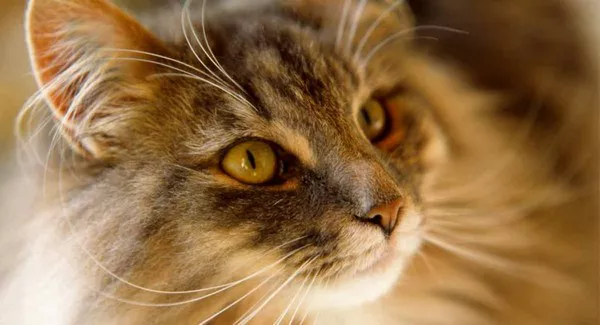Cats, with their retractable claws, are equipped with built-in tools for various activities, from climbing and scratching to hunting and playing. While these claws are a crucial part of a cat‘s anatomy, they also require regular maintenance to prevent potential issues. Cat owners often wonder, “How often should I cut my cat’s nails?” In this comprehensive guide, we explore the factors influencing nail growth, the signs indicating it’s time for a trim, and the step-by-step process of safely and efficiently cutting your feline friend’s nails.
Understanding Cat Nail Anatomy
1. Retractable Claws:
Unlike dogs, cats have retractable claws that remain hidden when not in use. This unique feature helps keep the claws sharp and ready for action.
2. Claw Layers:
A cat’s nail consists of layers, including the outer sheath or shell known as the “husk” and the inner core, which contains blood vessels and nerves, commonly referred to as the “quick.”
3. Blood Supply:
The blood supply to the cat’s nail is concentrated in the quick. Accidental cutting into the quick can cause bleeding and discomfort for the cat.
Factors Influencing Nail Growth
1. Age:
Kittens have softer and sharper claws that may require more frequent trimming. As cats age, their claws may become harder and less sharp.
2. Indoor vs. Outdoor Cats:
Outdoor cats often wear down their nails naturally through activities like scratching on trees or digging. Indoor cats may require more frequent nail trims due to the absence of natural wear.
3. Breed Differences:
Some cat breeds, such as the Maine Coon, may have larger and more robust claws that grow more slowly. Understanding your cat’s breed characteristics can influence the frequency of nail trimming.
4. Health Conditions:
Certain health conditions, including arthritis or obesity, may affect a cat’s ability to maintain its nails naturally. In such cases, regular nail trimming becomes crucial.
Signs It’s Time for a Trim
1. Clicking Sounds:
If you hear clicking sounds when your cat walks on hard surfaces, it may indicate that the nails are too long and need trimming.
2. Snagging or Hooking:
Long nails can snag on surfaces, leading to discomfort for the cat. If you notice your cat’s nails getting caught on fabric or carpets, it’s a sign that a trim is needed.
3. Visible Curling:
Nails that visibly curl or loop around can be uncomfortable for the cat and may require immediate attention.
4. Scratching Issues:
If your cat is experiencing difficulty retracting its claws fully or is avoiding scratching posts, it may be due to overgrown nails.
Optimal Frequency for Nail Trimming
1. General Guidelines:
In general, cat nails should be trimmed every 2 to 4 weeks. However, individual factors, such as the cat’s age, health, and lifestyle, can influence the ideal frequency.
2. Regular Monitoring:
Regularly inspect your cat’s nails and monitor for signs that they need trimming. Visual inspection is crucial in identifying overgrown or problematic claws.
3. Gentle Handling:
Begin handling your cat’s paws and nails from a young age to accustom them to the process. Gradual desensitization helps make nail trimming a stress-free experience.
Step-by-Step Guide to Cat Nail Trimming
1. Gather Supplies:
Collect the necessary supplies, including cat nail clippers or scissors, styptic powder (in case of bleeding), and treats for positive reinforcement.
2. Choose a Quiet Environment:
Select a quiet and comfortable space for the nail-trimming session. Ensure your cat feels secure and relaxed.
3. Gentle Paws Inspection:
Begin by gently inspecting your cat’s paws. Get them accustomed to having their paws handled before proceeding with the trimming.
4. Identify the Quick:
Locate the quick within the nail. The goal is to trim the pointed tip without cutting into the blood vessels and nerves.
5. Gradual Trimming:
Trim a small portion of the nail at a time. If in doubt, err on the side of caution and trim less than more to avoid cutting into the quick.
6. Use Treats and Positive Reinforcement:
Reward your cat with treats and positive reinforcement after each successful nail trim. This creates a positive association with the process.
7. Monitor for Signs of Stress:
Pay attention to your cat’s body language and behavior. If signs of stress or discomfort emerge, take a break and resume later or on another day.
8. Seek Professional Help if Needed:
If you’re uncomfortable or unsure about trimming your cat’s nails, consult with a veterinarian or a professional groomer for guidance.
Tips for Stress-Free Nail Trimming
1. Introduce Tools Gradually:
Allow your cat to sniff and inspect the nail clippers before using them. This helps reduce anxiety associated with unfamiliar objects.
2. Positive Associations:
Pair nail trimming sessions with positive experiences, such as treats, playtime, or affection. This creates a positive association with the process.
3. Patience and Calmness:
Approach nail trimming with patience and a calm demeanor. Cats can sense their owners’ stress, so maintaining a relaxed atmosphere is essential.
4. Professional Assistance:
If nail trimming becomes consistently stressful for you or your cat, seeking professional assistance ensures the task is done safely and efficiently.
Conclusion
Understanding the optimal frequency for cat nail trimming is a key aspect of responsible cat ownership. Regular nail maintenance not only prevents discomfort for the cat but also promotes overall paw health. By observing signs, maintaining a gentle and gradual approach, and incorporating positive reinforcement, cat owners can ensure that the nail-trimming experience remains stress-free for both them and their feline companions. Remember, fostering a positive association with nail care contributes to a lifetime of healthy and happy paws for your beloved cat.



























